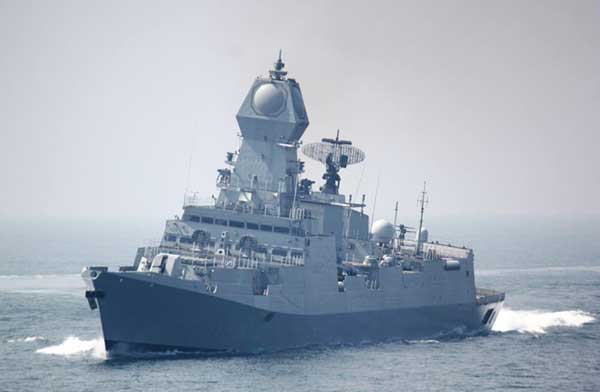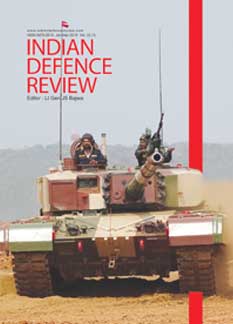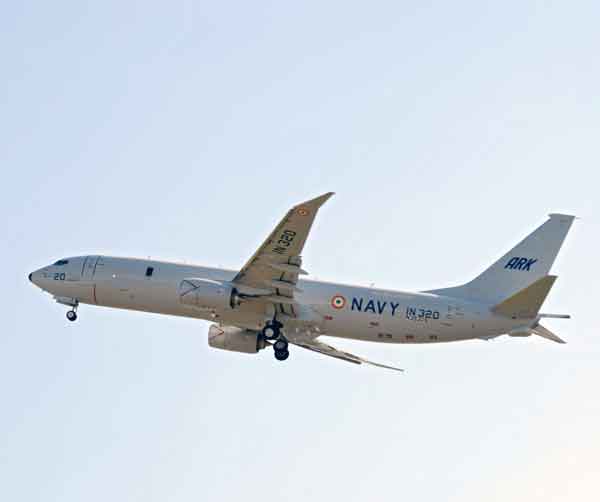It is obvious that the ‘Make in India’ initiative has the best of intentions for all 25 sectors including defence. However, its efficacy and viability (especially for the Indian Navy) till date has been well below par with hardly any fruition of any major project. It is often seen by many as more of a hurdle than a boon. The problems associated are innumerable and complex to say the least. While budgetary allocation is stated as the primary one, essentially it is one of mindset. The sooner that mindset is changed, the better for all stakeholders.
The ‘Make in India’ initiative was one of the most significant initiatives to be launched by Prime Minister Modi in September 2014 as part of a wider attempt at nation building…
The ‘Make in India’ initiative was one of the most significant initiatives to be launched by Prime Minister Modi in September 2014 as part of a wider attempt at nation building. Despite the associated hype, the attempt was not unique; similar attempts in different formats, often focusing only on indigenisation have been made since Independence. The nuances in this current case however, were somewhat different; it was more holistic, was much more media savvy and seemingly carried considerable political clout from the top echelons. The idea was not only to ‘Make in India’, but more importantly, it was aimed at creating jobs in large numbers, enhancing skill sets in 25 sectors of the economy and finally improving standards of quality while minimising its effect on the environment. The idea was to attract capital and technological investment into India.
Unfortunately, the anticipated revolution proved to be a mixed bag and the famous logo of the lion with gears, did not roar especially in the defence sector despite some achievements. Most analysts blamed the long-winded, omnipresent bureaucratic bottlenecks and procedures apart from commercial and technical wrangling as the main hindrances that stymied the entire effort. The resultant follow through ensured that no major ‘Make in India’ project in defence was started during the last three years though admittedly earlier efforts at indigenisation continued at varying degrees in earlier projects.
Make in India and the Navy
India has the largest maritime capability amongst all the littorals in the Indian Ocean Region which it regards as its strategic backyard. Given the criticality of sea-borne trade for India’s economy (with 90 per cent by volume and more than 70 per cent by value travelling by sea), the Indian Ocean Region emerges as the key region for great power aspirations. Consequently, its latest maritime strategy ‘Ensuring Secure Seas: India’s Maritime Security Strategy’ (NSP 1.2) talks of being the provider of net security and the balance of power in the entire region. These aspirational roles are being challenged strategically by China who not only has a forward base in Djibouti, but in various other ports in the entire region in what has been termed as ‘a string of pearls’.
Most analysts blamed the long-winded, omnipresent bureaucratic bottlenecks and procedures apart from commercial and technical wrangling as the main hindrances that stymied the entire effort…
In such a situation, modernisation and enhancement of maritime capability of the Indian Navy has gained strategic salience. Consequently, the roles and responsibilities of the Indian Navy have gained ascendancy, both in quantitative and qualitative terms. Hence, an assessment of all the current projects relative to the Indian Navy needs to be evaluated to assess the true viability of the all-important ‘Make in India’ initiative.
With its aspirations and growing role in mind, the Indian Navy has created the Maritime Capabilities Perspective Plan (MCPP) that projects the roadmap for modernising and equipping the Navy so as to be ready to face the evolving dynamics of maritime security in the near future.1 Thus, it is necessary to seamlessly dove-tail the acquisition plan along with that of the ‘Make in India’ initiative to ensure a successful modernisation programme.
It is in this vein that during an interaction with the media, Admiral RK Dhowan, the then Chief of the Naval Staff (CNS), had said, “We have put the ‘Make in India’ thrust on an overdrive. The focus in the roadmap is on weapons, sensors and cutting-edge technologies, with certain milestones and required timelines.”2
Levels of Indigenisation
In this context, there are essentially three general categorisations related to ship construction and inventory enhancement projects of the Navy. Since the thrust for indigenisation has been in progress since long, it has had a direct implication on the ‘Make in India’ initiative as far as ship construction is concerned. Accordingly, the following are the levels of indigenisation that has been reached till now in each of these sections.
• The Float section (includes the superstructure and the hull of ships and submarines)
• The Move section (mainly involves the propulsion systems)
• The Fight section (this mainly deals with a wide variety of weapons and sensors)
Kamorta class corvettes are the Indian Navy’s next-generation ASW platform being built under Project 28 at GRSE…
It is presumed that India has achieved 90 per cent indigenisation in the ‘Float’ section of warship production. This has been made possible through the focused efforts of metallurgical research and development by the Defence Research and Development Organisation (DRDO) and production by the Steel Authority of India (SAIL). The ‘Move’ section, on the other hand, has managed to reach an indigenisation level of 50 to 60 per cent. Finally, the ‘Fight’ section has lagged far behind probably due to the inherent complexities and managed to reach a figure of a barely 30 per cent approximately.3 This is despite various measures like involving Public Sector Undertakings (PSUs) as well as private sector into its production loop.
With this background, let us evaluate the various types of projects that are currently in progress and involve ship construction or inventory enhancement.
Surface Fleet
Project 15 B Guided Missile Destroyers
The success of the Project 15A project (Kolkata class guided missile destroyer) had spurred the Government to approve the follow-on 15 B Project for four more stealth destroyers. With a displacement of 7,000 tonnes, these new ships will possess enhanced stealth features sound suppression as well as some weapon upgrades.
The main armament will include the new Nirbhay, land attack cruise missile (1,000km range), the hypersonic BrahMos-II anti-ship cruise missile (300km range) and an Extended Range surface-to-air missile (100km range). Construction of the first of the class, INS Bengaluru is currently underway.
Project 17 A Stealth Frigates
After some years of dormancy, Project 17A stealth Guided Missile Frigates (FFG) has been rejuvenated as a follow up to the successful existing 5,600-tonne Project 17 Shivalik class frigates. The first ship of this class is expected to be launched soon and the scheduled timeline indicates that the remaining six are expected to be delivered, one each year until 2023.
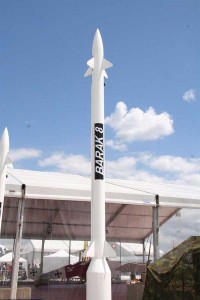 Of the seven proposed ships, the Mazagon Dock Limited (MDL) will construct the first four and the Garden Reach Shipbuilders & Engineers Limited (GRSE), Kolkata will construct the remaining three. The Project 17A’s design will include new generation weapon systems such as the Barak-2 MR-SAM/EL/M-2248 MF-STAR combination and BrahMos vertically-launched supersonic multi-role cruise missiles. This class can also be credited for using advanced metal composites for its construction.
Of the seven proposed ships, the Mazagon Dock Limited (MDL) will construct the first four and the Garden Reach Shipbuilders & Engineers Limited (GRSE), Kolkata will construct the remaining three. The Project 17A’s design will include new generation weapon systems such as the Barak-2 MR-SAM/EL/M-2248 MF-STAR combination and BrahMos vertically-launched supersonic multi-role cruise missiles. This class can also be credited for using advanced metal composites for its construction.
Project 28 ASW Corvettes
Kamorta class corvettes are the Indian Navy’s next-generation ASW platform being built under Project 28 at GRSE. These ships will have a very high percentage of indigenous equipment and were the first stealth corvettes built-in India. The basic design for this project was specified by the Directorate of Naval Design which was converted into detailed design by GRSE. The DMR 249A hull steel was high tensile steel specially produced by SAIL for this project.
The Indian Navy has been in dire need of vessels to clear mines from the coastal regions of the country…
The project’s objective was to enhance localisation and development of warship construction industry in India. The Indian Navy asked the industry to deliver equipment of higher sophistication levels than usual. This led to some unforeseen delays in the product delivery and struggle perfecting the products. The last of the four corvettes INS Kavratti is scheduled for commissioning soon.
Mine Counter Measure Vessels (MCMVs)
The Indian Navy has been in dire need of vessels to clear mines from the coastal regions of the country. To undertake this enormous task, specialised warships are employed to detect and destroy underwater mines, which can render harbours and offshore installations unsafe thereby disrupting shipping and commerce. The current task is being carried out by just four vessels that are over 30 years old. However, despite commencing the process of procuring minesweepers/counter vessels way back in July 2005, little seems to have progressed towards the final aim. The Navy still needs 24 MCMVs to safeguard the coastline.
Accordingly, a project for manufacturing 12 MCMVs as a collaborative effort with Kanganam Shipyard, South Korea was in the offing under the ‘Make in India’ initiative. However, the government has recently scrapped this Rs 32,000 crore project to build these 12 advanced minesweepers at the Goa Shipyard. This development is considered a serious blow to both, the Navy’s modernisation plans as well as the ‘Make in India’ scheme for the defence sector.4
According to a media report, the South Korean shipyard Kangnam, wanted deviations from the original RFP resulting in the final negotiations getting stuck for a long time. Further, certain problems regarding cost and Transfer of Technology had also marred the project. It is presumed that an Expression of Interest (EoI) will soon be re-issued to Kangnam, Intermarine (Italy) and other foreign shipyards specialising in building MCMVs, with non-magnetic hulls and high-definition sonars, acoustic and magnetic sweeps to detect mines.
Incidentally, the Goa Shipyard has already invested over Rs 700 crore in building infrastructure in the hope of constructing the MCMVs, which has now been negated. With a renewal of the process, it is likely that the infrastructure may get obsolete by the time the project to build MCMVs finally fructifies in at least a decade from now. Hence the negation of this project has had an effect not only on the ‘Make in India’ initiative, but also on India’s maritime preparedness.
In a nearly 140-ship Navy, the key naval ships with integral anti-submarine helicopters would find it difficult to operate against the increased deployments of the Chinese and Pakistani submarines in the Indian Ocean Region…
Indigenous Aircraft Carriers (IAC)
The process of constructing indigenous aircraft carriers has been ongoing since 2008, with considerable ups and downs. INS Vikrant, the IAC 1, is currently under construction at the Cochin Shipyard Limited. The project has suffered undue delays, time and cost overruns and is now slated to be inducted by October 2020. Considering the complexity of design development and construction, systems integration, the gestation period for the second-in-line – INS Vishal IAC II could well span over 15 years. Currently, discussions are centered on the incorporation of Electro Magnetic Aircraft Launch System (E MALS) built by General Atomics of US into the design of IAC-II which would offer flexibility for launching fighters as well as heavier aircraft for surveillance, early-warning, electronic warfare and other operations. There have also been talks for introducing nuclear propulsion into the second IAC.
Naval Helicopters
The capability of the ship-based helicopters to operate out at sea, for numerous tasks operating with enormous flexibility as advance warnings in front of ship formations for Anti-Submarine Warfare (ASW), Search And Rescue (SAR), Special Operations and Humanitarian Aid and Disaster Relief (HADR) missions, make them invaluable to any maritime operation. Unfortunately, there exists an acute shortage of helicopters of all types in the Indian Navy. According to media reports, the Indian Navy currently operates 11 Kamov-28 and 17 Sea King ASW helicopters. The majority of the helicopters, however, are non-operational. According to Defence Industry Daily, the Indian Navy has four flyable Kamov Ka-28 helicopters, whereas the serviceability rate of the Sea Kings was below 30 per cent, according to a report by India’s Comptroller and Auditor General (CAG), the government’s principal auditor.5
Thus, in a nearly 140-ship Navy, the key naval ships with integral anti-submarine helicopters would find it difficult to operate against the increased deployments of the Chinese and Pakistani submarines in the Indian Ocean Region. Given this scenario, New Delhi was initially planning a major $7 billion procurement for 123 naval multi-role helicopters in the nine-tonne to 12.5 tonne categories from major international vendors which was subsequently re-categorised as ‘Buy & Make (Indian)’. This was aimed at promoting the Indian aviation sector and encouraging them to tie-up with global majors for the Transfer of Technology and Joint Venture arrangements.
Thus, the aim for this re-categorisation was that the helicopters were to be manufactured by a domestic private company with technology transfer from an overseas helicopter Original Equipment Manufacturer (OEM). This is despite the fact that no private Indian company has ever built a complete helicopter, but only supplied sub-systems. Consequently, the government ordered the capacity and capability verification of private Indian aviation industry to be cleared for participation in the tendering process.
With the situation becoming precarious due to the obsolescence of the Sea King helicopters, in a parallel process, the Navy had wanted to purchase 16 helicopters (with an option for eight more) off-the-shelf, which was subsequently enhanced to 24 helicopters in view of the increased responsibilities in its area of operations.
Thus, the purchase of 16 US-made Sikorsky S-70B-x helicopter in 2014 was cleared. However, for quite some time, the procurement process made no headway and finally the talks with Lockheed Martin over the 16 Sikorsky S–70 B collapsed and were terminated following the expiry of the price bid in March 2017, after which the tender itself was withdrawn.
No private Indian company has ever built a complete helicopter, but only supplied sub-systems…
With this development, the Navy put forward a new procurement proposal for the off-the-shelf purchase of 24 helicopters costing $1.87 billion.
Efforts by the Navy to speed up the procurement procedure for these helicopters by getting them under the Foreign Military Sales (FMS) programme from the US – did not bear fruit as it was turned down by the Ministry of Defence (MoD) since procurement procedures did not allow for single-supplier preference, but instead prefer global competitions through which the weapons or platforms are selected based on the lowest price. In a simultaneous move and finally, after numerous twists and turns, the MoD issued two Requests For Information (RFI) in August 2017, to global vendors for 111 Naval Utility Helicopters (NUH) and 123 Naval Multi-Role Helicopters (NMRH).
Both these multi-billion dollar projects will be pursued under the ‘Make in India’ plan and would be covered under the Defence Procurement Procedure’s strategic partnership model aimed at bringing high-end military technology into the country. Thus, the procurement of the helicopters for the Indian Navy will be the first major acquisition project under new guidelines published for a new strategic partnership policy under the framework of the Defence Procurement Procedure 2016.
The Naval Utility Helicopters are machines with a maximum take-off weight of 4.5 tonnes and they are sought as a replacement for the existing fleet of HAL’s Cheetah and Chetak while the NMRH is expected to replace the ageing Sea-Kings. The Indian Navy’s disappointment with the Dhruv was a key factor in pushing for the NUH. However, since then, HAL has been working on a naval version with some anti-submarine capability and has already fielded an armed Rudra ALH-WSI version for the Army. However, the Navy has been lukewarm about the Dhruv, ostensibly raising concerns about stability issues, its ability to operate from ships and the lack of important features such as folding rotors for stowage on ships. Hence it is not known whether the Dhruv will finally be able to overcome these glitches and be welcomed by the Navy in the near future.6
The procurement of different helicopters for the Navy is being processed simultaneously under the ‘Make in India’ initiative and under the current defence procurement procedures…
While the primary attention has been towards the NUH and the NMRH, the other helicopter project that is being pursued is the Rs 6,500-crore plan to manufacture 200 of the Russian Kamov-226T Light Utility Helicopters. However, that project too seems to be in the doldrums despite an inter-governmental agreement in 2015. “The Joint Venture (JV) has been set up. But the Request For Proposal is yet to be issued to the JV to submit its techno-commercial offer,” according to media reports.7
Hence it is obvious that the procurement of different helicopters for the Navy is being processed simultaneously under the ‘Make in India’ initiative and under the current DPP. However, a trend analysis of the past twists and turns given that no deal has yet been inked, with the considerable lead time after the signing of the deal. It can only be stated that the Indian Navy will face a significant capability gap till the helicopters are procured, especially since the ships and submarines of the Peoples’s Liberation Army Navy (PLAN) are frequently deployed in the IOR.
US-2i Amphibious Aircraft
Given the growing bonhomie between Tokyo and New Delhi and that both countries are part of the strategic quad, the Indian Navy had shown an inclination to acquire a dozen of the amphibious aircraft US-2i built by ShinMaywa. The deal was touted as the first Japanese defence export to India mainly for SAR reconnaissance of the islands, humanitarian aid, rescue missions and rapid response. With half of the procured aircraft for the Indian Navy and the other half for Indian Coast Guard, the tacit understanding was that these aircraft would be re-configured to suit military missions. Understandably, the aircraft’s ability for short take off and an ability to land on tides as high as three metres would have been seen as a boon for India. Thus, the $1.65-billion deal was processed as part of the Services Capital Acquisition Plan (SCAP).
Unfortunately, the strategy for the purchase seemingly excluded the state-owned HAL from licensed production deal. Prima facie the entire project supported the ‘Make in India’ initiative; however, it was most unlikely that the Japanese would have agreed to transfer the entire assembly line along with technology. These doubts along with the efficacy of the envisaged roles for these aircraft and the high price factor, have ensured that till date, nothing has emerged and the deal lies in a limbo, unlikely to move forward.8
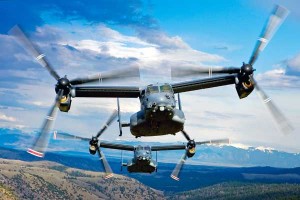 V22 Osprey Airborne Early Warning Aircraft
V22 Osprey Airborne Early Warning Aircraft
The Indian Navy has always felt the strong operational need for acquiring fixed-wing AEW aircraft to operate from aircraft carriers. While Northrop Grumman had in the past offered a modified version of the E-2 Hawkeye, the V-22 Osprey tilt-rotor aircraft offered by Boeing displayed far more flexible options instead. With vertical take-off and transition into fixed-wing flight, it provides considerable maneuverability and flexibility. Costing nearly $72.1million each in a fly-away condition, it is also likely to be purchased for the Indian Navy and its IAC. It remains to be seen if the Indian Navy will apply the ‘Make in India’ initiative tie-up for manufacture and procurement of this aircraft or simply purchase six attack versions off-the-shelf.
The Indian Navy will face a significant capability gap till the helicopters are procured, especially since the Chinese ships and submarines are frequently deployed in the IOR…
Sub Surface Vessels
Project 75(I) – Conventional AIP Submarines
As a follow-on to the grossly delayed Kalvari class P-(75) Project for the six diesel electric attack submarines the first of which the INS Kalvari was finally commissioned in December 2017. In October 2008, the Indian Navy issued a Request for Information (RFI) to a number of foreign shipyards and design firms for construction of a class of advanced diesel-electric submarines.
The RFIs were sent to Rosoboronexport, Armaris and HDW, among others. Acceptance of Necessity was accorded to the project by the Defence Acquisition Council in August 2011. In December 2014, the NDA government fast-tracked the bidding process due to mounting concerns over increasing PLA Navy activities in the Indian Ocean Region and diminishing submarine strength of the Indian Navy. Later, it was decided to construct all six submarines in Indian shipyards in accordance with the ‘Make in India’ initiative.
The government with intent to revisit the dormant Project 75(I), had formed a high-level committee to conduct a survey of Indian shipyards, both in public and private sectors including MDL, GRSE, Hindustan Shipyard Ltd, GSL, L&T, ABG Shipyard and Pipavav Shipyard that would be capable of constructing the six next-generation submarines by 2022. Reportedly, the committee had shortlisted L&T and Pipavav Defence & Offshore Engineering Company for the task. The tender under ‘Buy & Make (Indian)’ categorisation was to be issued for Transfer of Technology with leading foreign collaborators and substantial manufacturing in India for six advanced stealth diesel-electric submarines. In July 2017, the RFI was issued to six submarine builders and bids were requested to be filed by September 15, 2017. Spain and Japan did not submit response to RFI and hence seen as opted out of the competition.
The Indian Navy has always felt the strong operational need for acquiring fixed-wing AEW aircraft to operate from aircraft carriers…
The likely global contenders to participate in the venture include DCNS with the upgraded/advanced Scorpene, Navantia with the S-80, Rubin Design Bureau with the Amur 1650 and HDW with the Class 214. The Swedish Kockums Archer class were also in the race. Reportedly, the Japanese after some reluctance had also offered the sophisticated Soryu class conventional submarines that have been jointly developed and manufactured by Mitsubishi and Kawasaki Heavy Industries. However, the offer was turned down at the initial stages due probably to reluctance in ToT and the costing factor. Hence the Japanese did not submit a response to the RFI and are out of the process.
DCNS already has a technology tie-up with Pipavav Defence, as also Sembcorp Marine (Singapore), part of Temasek of the Singapore government, has a strategic and equity partnership with Pipavav Defence. The Project 75(I) submarines are expected to be bigger and more advanced that the Kalvari class equipped with a Vertical Launch System (VLS) to enable them to carry multiple BrahMos supersonic cruise missiles.
The submarines will also be outfitted with Air-Independent Propulsion (AIP) fuel cells.9
However, the unfortunate development in this project is that the Acceptance of Necessity for this Rs 70,000-crore project is scheduled to expire in February 2018 and with negligible progress, it is likely that it will be decades since any concrete progress will be made in this ‘Make in India’ project.10
India has already developed competency in indigenous production of nuclear submarines…
Nuclear Submarines
Recently, the Cabinet Committee on Security has approved plans for the indigenous development and construction of six nuclear-powered attack submarines (SSNs) for over Rs 6,000 crore. India has already developed competency in indigenous production of nuclear submarines. Arihant, India’s first indigenously designed and constructed nuclear submarine is a shining testimony in this domain. The plan to add six nuclear attack submarines is a modification of government’s decision taken last year for Project 75(I). This initiative seems to be an amalgamation of six nuclear submarines into 30-year submarine force building and modernisation perspective plan approved by the government way back in 1999.
The Problems
Unfortunately, one of the primary hurdles to the ‘Make in India’ initiative has been that of budgetary allocation. Not a penny was spent on ‘Make’ projects in two years (2012-2013 and 2015-2016) and the highest allocation this category ever received was in 2016-2017 – Rs 1.84 billion or just 0.25 per cent of the capital Budget. This dearth of funding highlights the lack of defence ministry commitment to the ‘Make’ procedure that was first proposed by the Kelkar Committee in 2005-2006.
Apart from that, the issue of ToT continues to be another major impediment. While many major foreign companies are reluctant to part with state-of-the-art technology, it is often viewed as a reverse problem of ‘technology percolation’. Not only are some of the Indian companies (with whom the JVs are proposed) unable or incapable of receiving the desired technology from abroad, they are unable to imbibe it for further use. This makes the entire effort of technology self-sufficiency – a pipe-dream in some areas.
Unfortunately, one of the primary hurdles to the ‘Make in India’ initiative has been that of budgetary allocation…
Apart from the above, the traditional mindsets combined with bureaucratic red-tapism at the level of the Ministry, private defence companies and the archaic defence PSUs are the biggest hindrances in the implementation of an initiative that can transform India into a self-sufficient in defence and defence exporting giant.
Conclusion
It is obvious that the ‘Make in India’ initiative has the best of intentions for all 25 sectors including defence. However, its efficacy and viability especially for the Indian Navy, till date has been well below par with hardly any fruition of major projects. It is often seen by many as more of a hurdle than a boon. The problems associated are innumerable and complex, to say the least. While budgetary allocation is stated as the primary one, essentially it is one of mindset. The sooner that mindset is changed, the better will it be for all stakeholders.
Notes
- RAdm S Ramsay, “Make in India” Thrust on an Overdrive for the Indian navy” SP’s Naval Forces Issue 3/2015 available at http://www.spsnavalforces.com/story/?id=376
- As cited in Ibid
- Ibid
- RajatPandit, “Govt Nixes Rs 32000 crore Make in India plan for Minesweepers” 08 Jan 2018 Times of India available at https://timesofindia.indiatimes.com/india/govt-nixes-rs-32000-crore-make-in-india-minesweepers-project/articleshow/62407669.cms
- India Selects 70 B as its Naval Multi Role Helicopter…No More” Defence Industry Daily , 13 Dec 2017 available at https://www.defenseindustrydaily.com/india-floats-tender-for-new-maritime-helicopters-05075/ also see “India Anti Submarine weakness” on same web page.
- Ibid – see https://www.defenseindustrydaily.com/india-floats-tender-for-new-maritime-helicopters-05075/
- RajatPandit‘Make In India’ projects come undone” TNN 31 Oct 2017, also see
- Defence minister ArunJaitley to lead military delegation to Russia” available at https://timesofindia.indiatimes.com/india/defence-minister-arun-jaitley-to-lead-military-delegation-to-russia/articleshow/59226351.cms
- PK Ghosh “US-2I a feather in Navy’s Cap?” 29 Nov 2016 available at http://www.dailypioneer.com/columnists/oped/us-2i-a-feather-in-navys-cap.html
- Project 75 I submarine available at https://en.wikipedia.org/wiki/Project_75I-class_submarine
- Rajat Pandit”10 Years on 70000 crore sub project remains stuck “ January 30 Times of India p16.




